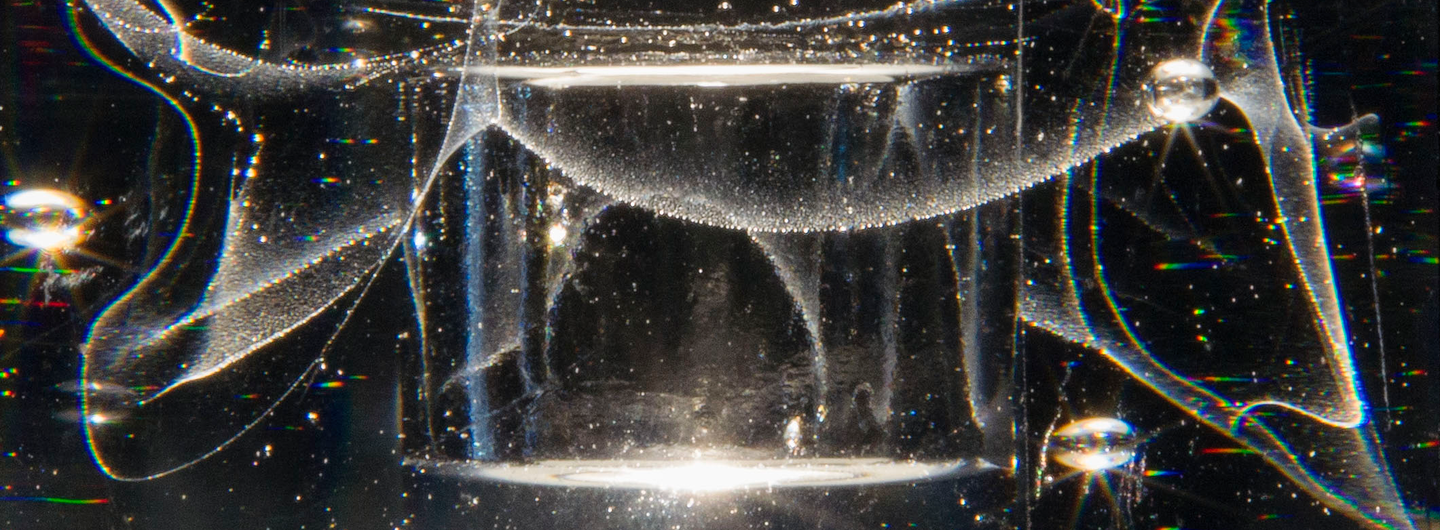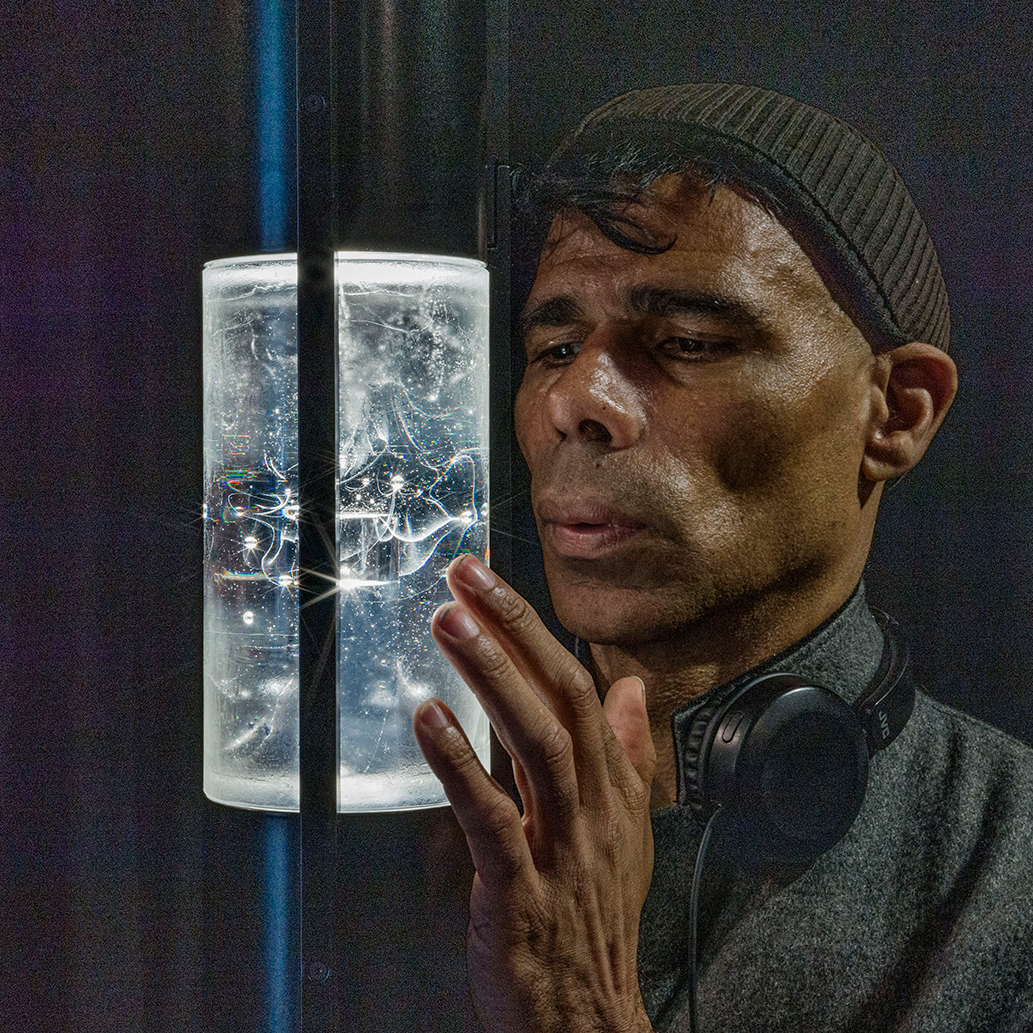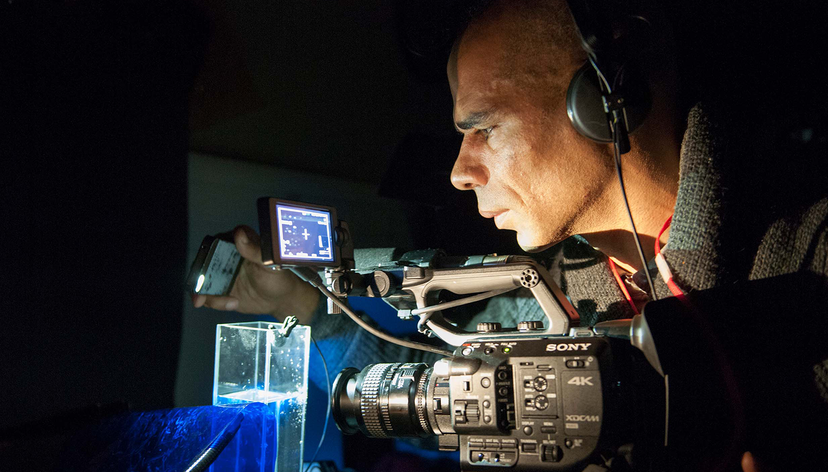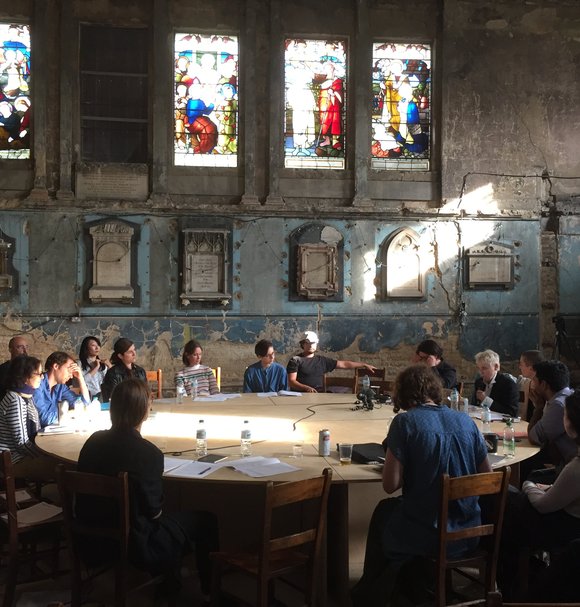
Key details
Date
- 30 September 2021
Author
- RCA
Read time
- 3 minutes
Wayne Binitie’s immersive art-science exhibition Polar Zero is now open to the public at the Glasgow Science Centre as part of the COP26 Green Zone which aims to promote public understanding of climate action.

Polar Zero is a research and public science-art partnership from leading UK institutions British Antarctic Survey (BAS), the Arts and Humanities Research Council (AHRC), engineering consultants Arup and the RCA. The exhibition has been timed to coincide with COP26 and aims to make an innovative cultural contribution to public discourse and policy on climate change.
We spoke to Wayne about how his practice and modes of enquiry developed at the RCA and through collaboration with individuals and organisations across art and science.

Your practice is incredibly broad involving sonic experience, geological data, sculpture, field recordings and archives to name a few aspects. Did anything in particular influence your practice as it stands?
In 2013 I received a travel award to visit Iceland and the Library of Water by artist Roni Horn. The Library of Water, is a long-term project, conceived by Horn for a former library in a building overlooking the sea. Since opening in 2007, its three collections – water, words and weather reports – have been integrated by the artist to express multiple connections between the local community and Horn’s extended practice of writing, photography, sculpture and installation.
Horn’s quest to collect and write stories about water informs the thinking and making of my collaborative project with Arup and the British Antarctic Survey. The quest of Polar Zero is not to attempt to speak for polar water but propose a form of writing and making that exists in currents, flows, forms and surfaces discovered during the course of research.

At the centre of the Polar Zero exhibition 1765, a glass sculpture containing an ampule of Antarctic air from that year. Can you tell us what this sculpture means to you as a piece of public art?
I am interested in the ways polar history is made legible in the present. As the shifting argumentative centre of the climate discourse is solidified, liquified and vaporised over ancestral time and contemporary place, critical notions of poles and polarity straddle truth and fiction, following material and immaterial ‘lines of flight’ both real and imagined.
Polar Zero explores a fluid mode of polar enquiry, one that is moderated by geographical and magnetic lines of longitude and latitude, absence and presence, thought and feeling. Operating at both the private and public level, our 1765 sculpture might therefore be described as a potent form of writing with the weather.
In this context, my Solid Series (glass) Liquid Series (paintings) Vapour Series (sound) body of artworks do not attempt to impose narrative meaning on the relation between the viewer and site. Instead, it insists that polar water has its own grammar, logic and rhetoric that offers viewers multiple layers of aesthetic meaning, sensing, being, feeling and critical thought.
How was the ampule of air actually put into the sculpture?
That’s a secret! Art has to be able to retain at least a bit of mystery. We hope it will be well worth the wait.
There has been a lot of media attention on the action that needs to be taken for COP26 to be a success. How do you think that art-science collaborations like yours with Arup and the British Antarctic Survey can push us towards climate action?
As notions of the climate and the atmosphere are mediated by artists and thinkers in the spaces of galleries and museums, within landscapes and across computer screens and printed text. We can raise important questions about how the polar past is written and read in the present.
Is this history human or non-human, sensible or intellectual, material or immaterial? Is art an effective means of motivating political action or individual response? How should the polar future be re-imagined?
The Polar Zero exhibition examines these questions and asks what hidden histories written in polar ice can contemporary art reveal? The exhibition comes at a time that seems more urgent than ever before, and asks what it means to touch and be in touch with the Earth.

Where is your practice going next? Are you going to continue working with Antarctic ice?
Polar Zero will feature Ice Stories. And I will continue with these after the exhibition closes. Ice Stories draw on personal anecdotes, memories and oral testimonies from the national and international scientists and experts whose lived experiences of the Arctic and Antarctic facilitate and enable their narrative futures to be written.
Excerpts from these stories will ‘come to life’ at the Glasgow Science Centre on an interactive ‘pathway’ that will lead visitors to the 1765 centrepiece sculpture. Selected words and phrases from Ice Stories will be stencilled on the internal and external floor of the Centre. As visitors walk past in the dark, the words may well appear and disappear like polar ice itself.

As a legacy of this moment in the history of climate change action, we are particularly pleased that visitors to COP26 and beyond will have the opportunity to read these words and connect to the magnitude of the work conducted by the climate scientists at the British Antarctic Survey. Polar Zero amplifies the magnetic stories and unnamed polar history that is yet to be told. The active participation of visitors during my exhibitions to date suggest that such histories are not vanishing points, but coordinates marking points where parallel lines emerge and converge.
I hope the artworks mediate a powerful polar dialogue at both the individual and collective level, and that the exhibition provokes a renewed and deeper awareness of the glacial past, present and future.

